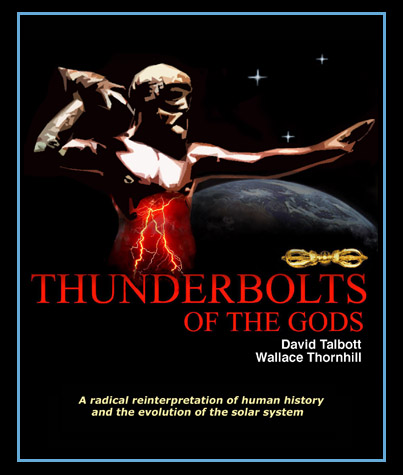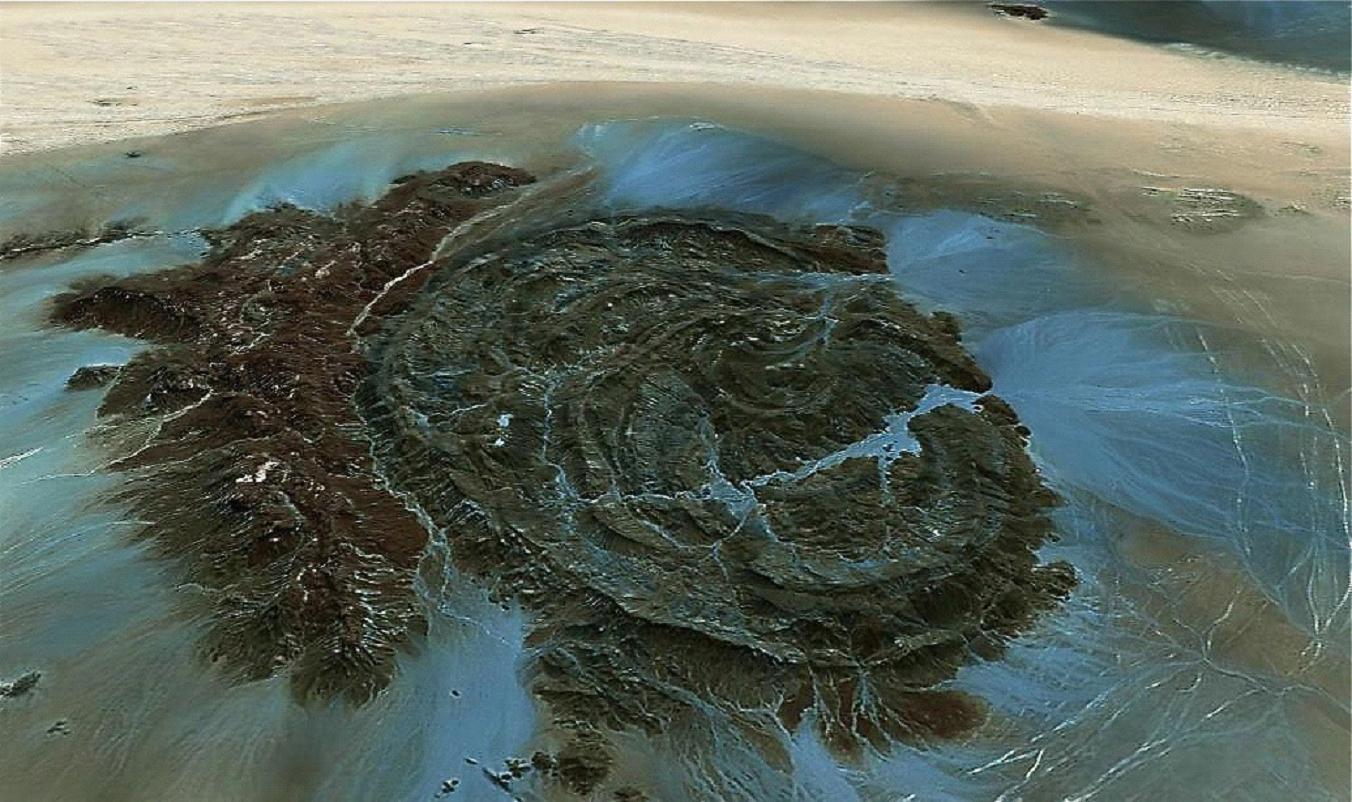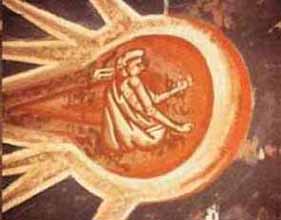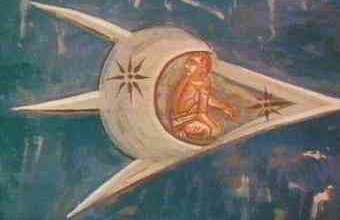
Sand dunes in the Egyptian desert. What phenomenon could be capable of raising the temperature of desert sand to at least 3,300 degrees Fahrenheit, casting it into great sheets of solid yellow-green glass?
Posted on 11/02/2009 10:17:50 AM PST by BGHater
"Now I am become Death, the destroyer of worlds." —The Bhagavad Gita
Seven years after the nuclear tests in Alamogordo, New Mexico, Dr. J. Robert Oppenheimer, the father of the atomic bomb, was lecturing at a college when a student asked if there were any U.S. atomic tests before Alamogordo.
“Yes, in modern times,” he replied.
The sentence, enigmatic and incomprehensible at the time, was actually an allusion to ancient Hindu texts that describe an apocalyptic catastrophe that doesn’t correlate with volcanic eruptions or other known phenomena. Oppenheimer, who avidly studied ancient Sanskrit, was undoubtedly referring to a passage in "The Bhagavad Gita" that describes a global disaster caused by “an unknown weapon, a ray of iron.”
While it may be alarming to the scientific community to speak of the existence of atomic weapons before the present cycle of civilization, evidence of this phenomenon seems to whisper its verses in every corner of the planet.
This evidence comes not only from the Hindu verses but also from ample extensions of fused glass fragments scattered throughout many deserts of the world. Silicon crystals, curiously cast, resemble remarkably the same fragments found after the nuclear explosions in Alamogordo’s White Sands atomic testing site.
In December 1932, Patrick Clayton, a surveyor from the Egyptian Geological Survey, drove between the dunes of the Great Sand Sea, close to the Saad Plateau in Egypt, when he heard crunching under the wheels. When he examined what was causing the sound, he found great chunks of glass in the sand.
The find caught the attention of geologists around the world and planted the seed for one of the biggest modern scientific enigmas. What phenomenon could be capable of raising the temperature of desert sand to at least 3,300 degrees Fahrenheit, casting it into great sheets of solid yellow-green glass?
While passing through Alamogordo’s White Sands missile range, Albion W. Hart, one of the first engineers to graduate from the Massachusetts Institute of Technology, observed that the chunks of glass left by nuclear tests were identical to the formations that he observed in the African desert 50 years earlier. However, the extension of the cast in the desert would require that the explosion be 10,000 times more powerful than that observed in New Mexico.
Many scientists have sought to explain the dispersion of large glass rocks in the deserts of Libya, the Sahara, Mojave, and many other places in the world, as products of gigantic meteorite impacts. However, due to the absence of accompanying craters in the desert, the theory doesn’t hold up. Neither satellite imagery nor sonar has been able to find any holes.
Furthermore, the glass rocks found in the Libyan Desert present a grade of transparency and purity (99 percent) that is not typical in the fusions of fallen meteorites, in which iron and other materials are mixed in with the cast silicon after the impact.
Even so, scientists have proposed that the meteorites causing the glass rocks could have exploded several miles above the surface of Earth, similar to the Tunguska Event, or simply rebounded in such a way that they carried with it the evidence of the impact, but leaving the heat from the friction.
However, this doesn’t explain how two of the areas found in close proximity in the Libyan Desert show the same pattern—the probability of two meteorite impacts so close is very low. Nor does it explain the absence of water in the tektite specimens when these areas of impact were thought to be covered in it some 14,000 years ago.
The city where culture emerged in the present-day Indus Valley is a great enigma. The rocks of the ruins have partially crystallized, along with its hazy inhabitants. Moreover, mysterious local texts speak of a period of seven days of gratitude toward flying cars called Vimana for saving the lives of 30,000 inhabitants from a horrific episode.
In 1927, years after the discovery of the Mohenjo Daro ruins, 44 human skeletons were found on the outskirts of the city. The majority were found face down, lying in the street and holding hands as if a serious catastrophe had suddenly engulfed the town. In addition, some bodies present signs of unexplainable radiation. Many experts believe that Mohenjo Daro is an unequivocal sign of nuclear catastrophe two millennia before Christ.
Nevertheless, the city is the not the only ancient locale suspected to have gone nuclear. Dozens of buildings from the ancient world present bricks with fused rocks, like the heat test that modern scientists cannot explain:
Ancient forts and towers in Scotland, Ireland, and England
The city of Catal Huyuk in Turkey
Alalakh in northern Syria
The ruins of the Seven Cities, near Ecuador
Cities between the Ganges River in India and the Hills of Rajmahal
Areas of the Mojave Desert in the United States
In whatever place of the world, the presence of an abysmal temperature and vivid descriptions of a terrible cataclysm suggest that there may have been an earlier epoch in which possibly nuclear technology was already known—an epoch in which atomic technology was turned against man.
Further Reading:
http://www.bibliotecapleyades.net/arqueologia/esp_mohenjo_daro_1.htm
http://skepticreport.com/sr/?p=288
http://forteanswest.com/wordpress-mu/nevadalowfi/tag/robert-oppenheimer/
http://www.marmet-meteorites.com/id37.html

Sand dunes in the Egyptian desert. What phenomenon could be capable of raising the temperature of desert sand to at least 3,300 degrees Fahrenheit, casting it into great sheets of solid yellow-green glass?
Even with my imagination, this I’m not buying.

If you want on or off the Electric Universe Ping List, Freepmail me.
Woops, you beat me to it. My guess for this phenomenon:
Cosmic Thunderbolt
:’)
"There was an article written on Hart's life by Margarethe Casson that appeared in the magazine Rocks and Minerals (no. 396, 1972), that mentions this occasion. In the article she writes: "At the time he was puzzled and quite unable to explain a large expanse of greenish glass which covered the sands as far as he could see. …Later on, during his life he passed by the White Sands area after the first atomic explosion there, and he recognized the same type of silica fusion which he had seen fifty years earlier in the African desert.""
That would make him at least a spry 75.
It's possible that the omission of the type of engineer coupled with the assumption that all of MIT's engineering disciplines were offered the day MIT opened it's doors leads to incorrect conclusions.
Suppose he was among the first Chemical Engineering graduates?
From MIT's web site:
The first chemical engineering curriculum at MIT was offered in 1888 and helped to establish chemical engineering as a discipline.
A little math...
First chemical engineer graduate 1893. 1893+50 years=1943, pretty consistent with Casson's biography.
He could well have been among the first graduates in:
Chemical Engineering (Department established 1888)
Naval and Oceanic engineering (Department established 1893)
Aeronautical engineering (Department established 1896)
Geology and Mining engineering (first engineering class offered 1871)
The math on the other disciplines is left to the reader as an exercise...
They must’ve been nearby the Ancient Saturn V Launch site.
Perhaps not. See #45
Might the glass have been a result of plasma discharges or “planetary lightning”?
bump
Large meteors with low metal content explode before reaching the ground. The energy released in such events can exceed that of the most powerful nuclear weapons; this is the leading theory for the Tunguska explosion.

Granite multi-ringed structure, Sahara Desert, Libya. Original image credit: NASA/Landsat 7
Jebel Arkenu Apr 13, 2009
Some of the world's most unusual geography can be found across North Africa. Could it have been created by massive electric discharges in the recent past? The Libyan Desert is an empty wasteland and can support no human habitation. The central portion is exceptionally arid, where it rains less than once in thirty years. It is so dry and barren that NASA chose it as an experimental base of operations for the Viking lander project, since they considered it to most closely resemble the conditions on Mars. There are no roads or tracks, just the great open void.
Previous Thunderbolts Picture of the Day articles have described the strange landscapes across the African continent, as well as their anomalous attributes. Giant craters, deep cracks in the Earth, and lightning-like Lichtenberg figures etched into the terrain all point to events that do not lend themselves to uniformitarian explanations.
In 1932, British surveyor Patrick Clayton was the first European to explore the area where the borders of Egypt, Libya, and Sudan meet. As he crossed the Great Sand Sea, he ran over something that made crunching noises under his wheels. It turned out to be silica glass...
Like Siberia it blows up in the atmosphere!!!
Leonardo Vintiñi had a little too much chianti.
That’s what I think too. And it looks like Swordmaker does as well. The book he referenced in post #42 talks about the planetary lighting plasma discharge phenomenon. It refers to it as cosmic thunderbolts. That book is part of a series. Another book in the series called “The Electric Universe” has all the science and math behind this idea.
It is more evidence that there were wars going on by ABs as written in ancient writings. The question remains as to why the ancient writings (all ancient writings about space craft or what the ancients called other names) are believed to be SIFI and not real.


I would like to propose a WAG concerning the cause of desert glass. Instead of atomic detonations they we caused by exhaust blast from interstellar space ships landing and taking off. That fits in better with the old Indian sagas.
Obviously, there was a large interstellar trading civilization in Neolithic times. One wonders which star they came from?
Thanks.

Disclaimer: Opinions posted on Free Republic are those of the individual posters and do not necessarily represent the opinion of Free Republic or its management. All materials posted herein are protected by copyright law and the exemption for fair use of copyrighted works.